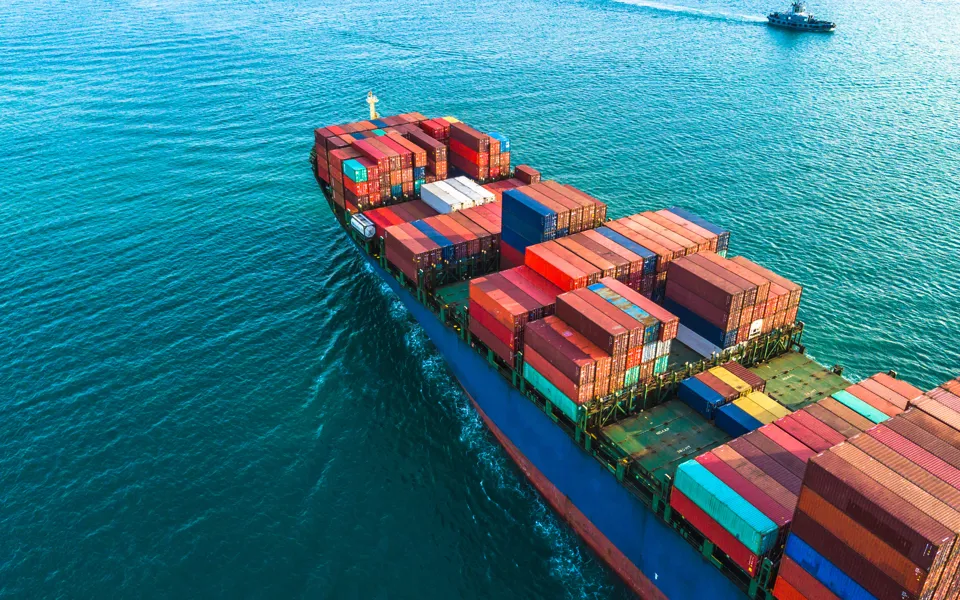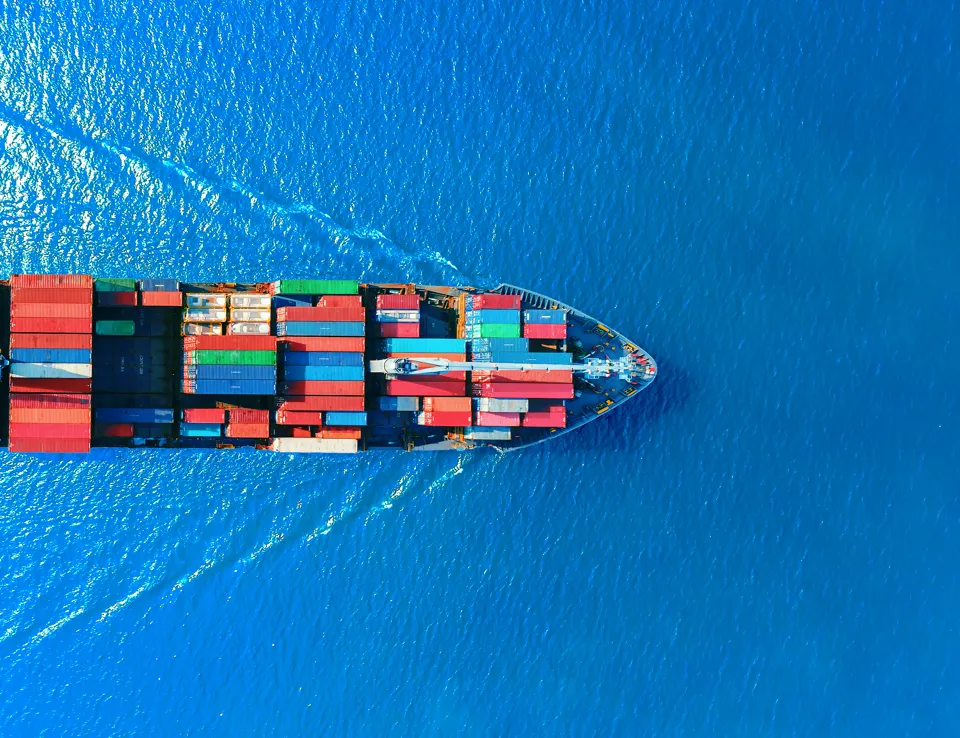
Charting a course to decarbonisation: implications of the IMO's Net Zero Framework
17 Apr 2025
Maritime decarbonisation has gradually moved up the international policy agenda, driven by climate targets, investor expectations, and evolving market dynamics. And like other industries have set a 2050 target for achieving net zero.
To achieve this, regional frameworks, such as the EU's FuelEU Maritime and Emissions Trading System (EU ETS), have already been set in motion. Yet, the industry has long called for a global approach. Announced in April 2025, the IMO's Net Zero Framework is a vital step on the journey, offering a detailed and structured plan for reducing fuel greenhouse gas (GHG) intensity across the global fleet.
Key details of the IMO Net Zero Framework
Starting in 2028, ships of 5,000 gross tonnage (GT) and above will be required to calculate their GHG Fuel Intensity (GFI) on a well-to-wake basis. This lifecycle approach ensures all emissions are considered from fuel production through to combustion.
Two compliance tiers have been introduced:
- Tier 2 (Base Target): Requires an 8% GFI reduction by 2030, 30% by 2035, and 65% by 2040.
- Tier 1 (Direct Compliance): A more stringent trajectory, demanding 21% GFI reduction by 2030 and 43% by 2035.
To enable compliance flexibility, ships may bank or transfer Surplus Units (SUs) under Tier 2, or purchase Remedial Units (RUs) at defined carbon prices:
- $380/tonne CO2e for Tier 2 RUs
- $100/tonne CO2e for Tier 1 RUs
Ships adopting zero or near-zero GHG technologies (emitting less than 19 gCO2eq/MJ until 2035, and 14 gCO2eq/MJ thereafter) will also benefit from a to be defined reward mechanism.
Revenue generated from these mechanisms will feed into a newly established Net Zero Fund used to reward the use of zero/near-zero GHG emission fuels and support the energy transition of developing countries, which Ricardo estimates could raise USD$10-12 billion annually by 2035.
Implications for stakeholders
The IMO Framework introduces a complex regulatory environment that will influence decision-making across the maritime value chain: from shipowners and operators to fuel suppliers and financiers, stakeholders will need to adapt rapidly.
|
Ship owners and operators Compliance will hinge on both operational strategies and investment decisions. Without a clear understanding of GHG trajectories and cost impacts, many operators face uncertainty. |
Technology and fuel providers The Framework underscores the need for robust technology and fuel evaluation.
|
|
Policymakers and port authorities While the IMO has set the global direction, national and regional policies will play a vital role in implementation. At the same time, regional or national policies may be adopted for domestic shipping or to further promote uptake of decarbonisation measures in the sector.
|
Financiers and investors Accessing climate finance and investment capital remains a key challenge for many maritime stakeholders. Barriers include fragmented funding mechanisms, complex eligibility criteria, and the need for robust, data-driven business cases to secure investment. Additionally, the lack of standardisation in GHG accounting and emissions certification can undermine investor confidence. While the Net Zero Framework will be an important step in reducing uncertainty for investors, some of the aspects above still need to be clarified with implementation guidelines at IMO level. |
Until the regional and national frameworks and policies have been announced, organisations should take the below steps to ensure compliance across their operations:
- Build a credible, costed, and flexible roadmap aligned with the IMO’s fuel intensity and emissions pricing rules. Ensure this includes tailored GHG reduction strategies using scenario modelling tools; and complete an assessment of the technological, operational, and fuel options available with both implementation timelines and costs.
- Ensure zero-emission fuel-switching decisions are based on evidence to ensure you remain compliant and competitive. Undertake an assessment of technical maturity of each of the decarbonisation technologies; and model well-to-wake GHG emissions with cost profiles for alternative fuels.
- Seek to unlock sufficient funding to finance your net zero transition. Build investment-grade business cases to submit to the IMO Net Zero Fund and other climate finance mechanisms. Ensure all options are assessed across national and regional levels.
- Monitor forthcoming IMO guidance on life-cycle assessment (LCA); Monitoring, Reporting & Verification; and SU/RU market design to ensure compliance is maintained.
Aligning with other frameworks: challenges and considerations
While the IMO Framework is global in its scope, it does not supersede or replace existing frameworks that have been set by jurisdictions, such as the EU. Operators in those jurisdictions will need to ensure they that they are taking action to meet both requirements.
For example, the IMO Framework introduces more stringent measures from 2030 compared to the compared to FuelEU targets, yet the penalty cost for failing to meet the measure is lower in the IMO Framework. Additionally, the average GHG price signal from the IMO measure is well below that of the EU ETS for shipping, in both price level and coverage.
A major difference between the FuelEU and the IMO Framework is that while the EU Framework lays a path to achieving net zero by 2050, the IMO Framework extends to just 2035. This means that while the IMO sets the foundation for net zero, it will need to lay out further targets to achieve decarbonisation of the industry nearing 2035.

IMO guidance compared to other key EU regulations. Source: Tim Scarborough, Director of Maritime for Ricardo
To reduce overcomplication for operators and governments impacted by both Frameworks, harmonisation and alignment of standards – especially regarding lifecycle fuel assessment and emissions accounting – will be critical issues to resolve.
How to achieve IMO Net Zero Framework targets
The IMO Framework provides a solid foundation for decarbonising the maritime sector, but in its current form it will not be sufficient to achieve full decarbonisation by 2050. As the current measures only extend to 2035, further definition and increased ambition will be needed to establish a clear pathway to net zero by 2050. Nonetheless, the Framework represents a critical first step on the journey toward a fully decarbonised global fleet.
Moreover, crucial operational details are still to be defined. Guidelines on LCA of fuels, reward mechanisms for early movers, and the revenue disbursement strategy for the Net Zero Fund must be finalised.
Today, there are number of pathways that commercial organisations, governments, and financiers can start down as they begin to implement the Framework into their organisations.
- Green corridor studies: Assessing technical, policy, and investment needs for specific ferry and cargo routes.
- Fuel pathway evaluations: Helping clients navigate the choice between hydrogen, e-ammonia, methanol, and other low-emission options.
- Technology maturity assessments: Ensuring deployment strategies are aligned with readiness levels.
- Lifecycle emissions modelling: Providing robust, science-based GHG assessments for new fuels and systems.
- Assessing financing instruments available: Identify financial instruments available at global, regional and local level tailored to the specific needs of the shipping industry.




 Ricardo Sustainability, Clean Energy and Environment
Ricardo Sustainability, Clean Energy and Environment




